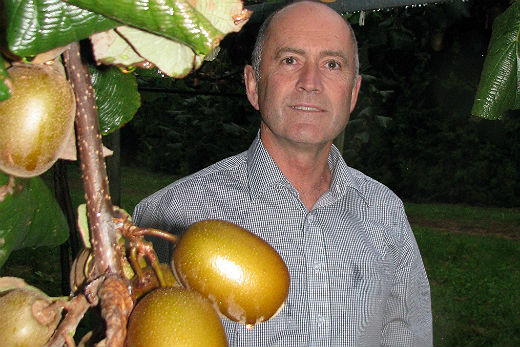Should Queensland fruit fly become established in Te Puke kiwifruit orchards, it could cost the industry $430 million each year, a 2007 study found.
Ruth Underwood of Fruition Horticulture Tauranga carried out the study on behalf of the industry but seven years on, the costs of a breeding population are likely to be much greater.
The kiwifruit industry need confidence Queensland fruit fly can be kept out, says Barry O'Neil, CEO of Kiwifruit Vine Health.
In an effort to stop the insect becoming established in this country, Ministry for Primary Industries has mounted its second operation in three months in Whangarei following finds of single male Queensland fruit flies in January and again on April 1. So far no more insects have been found.
Kiwifruit Vine Health CEO Barry O'Neil says while the industry is grateful for the rapid response of MPI and pleased with the way the operation is conducted, it is dismayed that a second insect has been detected so soon after the first find.
'If Queensland fruit fly was ever established here it would have a significant impact on our economy. Conservatives estimates are that it costs the Australian horticultural industry $100 million a year.
'The greatest cost to the kiwifruit industry would be the restrictions many markets would place on our fruit.”
With kiwifruit exports well underway, no markets have so far closed their borders and Barry says none have reason to do so as the find of a single insect does not mean a breeding population is established. Because of the length of the insect's breeding cycle, MPI believes the second insect find is not related to that in January.
Male flies are usually found first because they are attracted to pheromone traps. Once a male is found, evidence of female insects is looked for by cutting open fruit taken from the surrounding areas, and hatching any eggs it may contain.
The operation in January and February cost at least $1.6 million and had horticultural industries been part of the proposed Government Industry Agreement on biosecurity, growers would be sharing some of the costs of both operations.
'The industry needs confidence that the borders will keep Queensland fruit fly out of New Zealand and that finds of the insect will be a rare and isolated event,” says Barry.
Barry was among representatives of horticultural industries who visited the MPI operation in Whangarei in February and while overall the ministry's procedures met with approval, there were areas industry felt could be improved upon, he says.
These included controls over fresh fruit and vegetables at supermarkets and farmers market. Even though they are just outside the current control zone, Barry says MPI has implemented controls in these areas in this operation.
As the legal import of fresh fruit and vegetables is a possible source of the insect, MPI has sent a team to Australia to conduct an audit of procedures around their export to New Zealand to ensure standards are being met.
Passengers flying into the country failing to dispose of fruit they are carrying are another potential source and there is increased profiling of passengers from areas where fruit fly is present, and an increase in the use of detector dogs and x-rays.
'The third possibility is passengers from cruise ships or yachts coming ashore with fruit and in both areas MPI is increasing its inspections.”
Barry says the second MPI operation in three months is a significance inconvenience to Whangarei residents within the control zone, but he's grateful for their co-operation.
Keeping Queensland fruit fly out is also in the interests of home gardeners as should it become established, it would adversely affect their ability to grow fruit too.
If more insects are found, MPI will likely spray fruit trees in a ground-based operation. If no more insects are found, the current operation should wrap up by Easter Saturday.



0 comments
Leave a Comment
You must be logged in to make a comment.